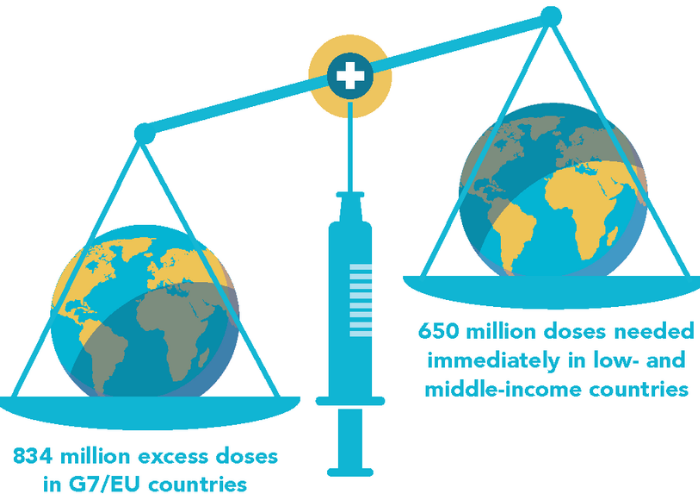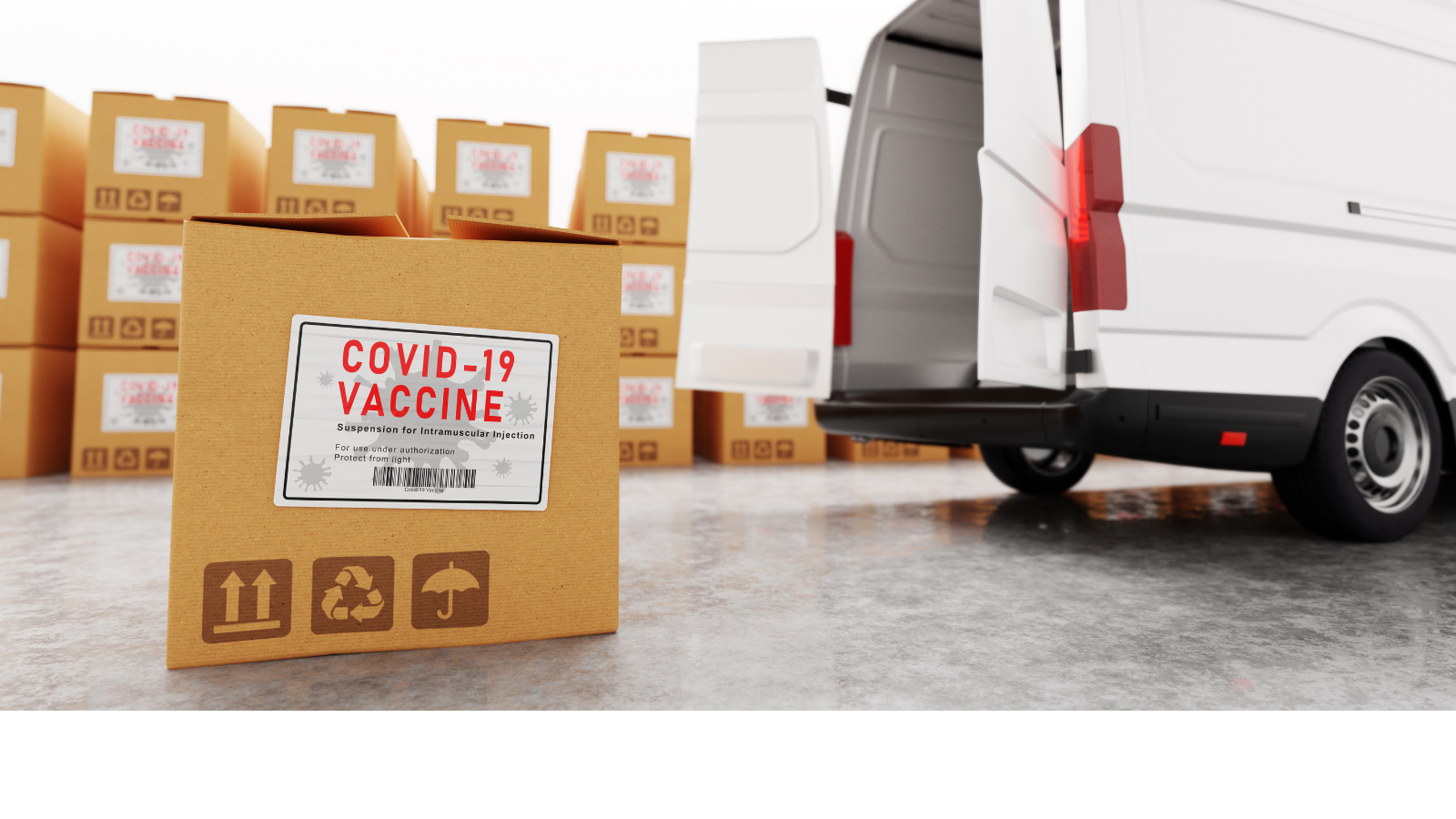
Rapid Redistribution of G7/EU Excess Supply Can Close the Vaccine Gap
Bilateral purchases and deliveries from COVAX, which continues to struggle with access to reliable supply, are expected to meet a small portion the need. But counting in expected COVAX deliveries, countries will still need another 650 million doses to reach 40 percent coverage. Rapid redistribution of existing and expected supply is needed to address the significant supply gaps at the country level.

Rapid redistribution of existing and expected supply is needed to address the significant supply gaps at the country level.
We estimate that G7 and EU countries will have significant excess supply of authorized vaccines by the end of 2021 (Tab 5.1). This calculation assumes countries retain enough supply to achieve 75 percent vaccination coverage (including children) and 20 percent booster coverage by end of 2021. We also include a 10 percent contingency and account for donations that have already been shipped. Our calculation of excess doses is conservative in that it allows for a more than three-fold increase from the current daily vaccination rates across G7/EU. Given that supply will continue to ramp up in 2022, excess G7/EU doses will increase even as booster coverage increases.
We thus project that the excess doses available in G7 and EU countries will be enough to fully close the 650 million dose supply gap for LMICS to reach the 40 percent vaccination target by the end of the year.
Despite this excess supply and substantial G7 and EU country pledges for dose donations, only a small percentage of pledged doses have been shipped to date (Tab 5.2). The United States is a clear leader, having pledged 1.1 billion doses and delivered more donated doses than any other country has even pledged.
High-income countries have continued to endorse the 40 percent vaccination target without undertaking actions with the necessary scale and urgency to realistically achieve it. To close the supply gap to reach 40 percent coverage by year end, the United States and other G7/EU countries will need to accelerate the delivery of at least 650 million doses. The best option is to use “queue shifting,” as the US recently did, when it deferred delivery of some of its contracted Moderna doses to prioritize dose delivery to the African Union. This means that doses go directly off the production line to countries where they are most needed, rather than to countries that already have excess. Dose donation (donor countries shipping doses that they have already received) is also important but can leave recipient countries with little time to use the doses before they expire.
Our calculations rely on publicly available information, which is not comprehensive, timely, or consistently available across countries. Additional transparency from high-income countries and manufacturers, especially on monthly vaccine production, allocation, and delivery, is necessary for more accurate analysis, effective planning, and greater accountability.
Source: COVID GAP analysis, using donations data from Launch and Scale Speedometer, an initiative of the Duke Global Health Innovation Center (Tab 5.1 updated December 3, 2021; Tab 5.2 updated December 9, 2021)

